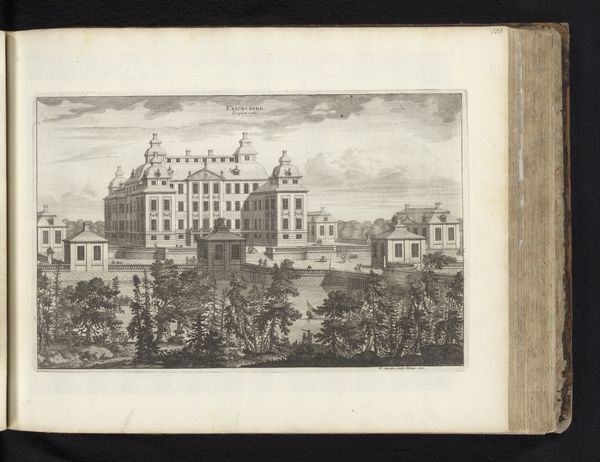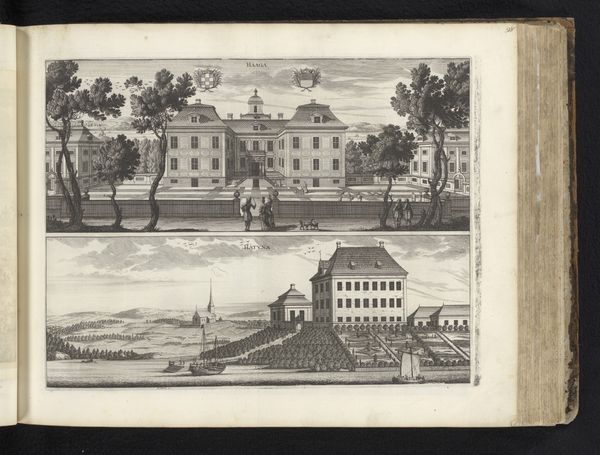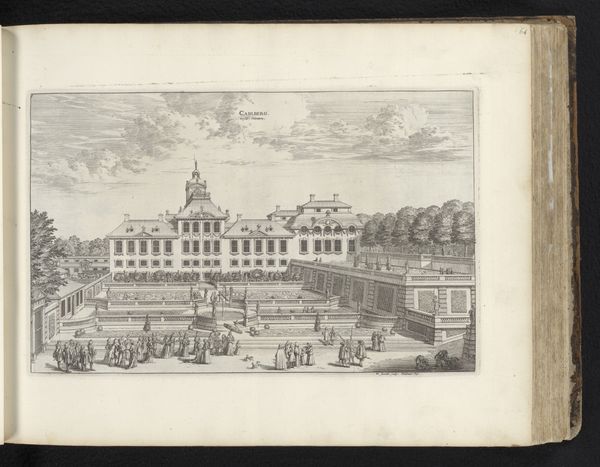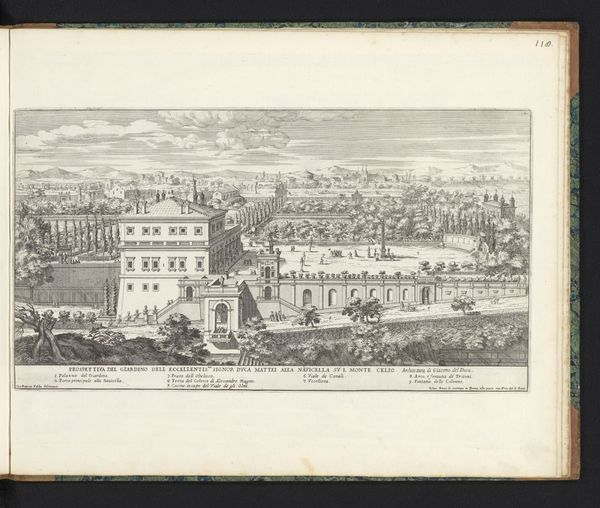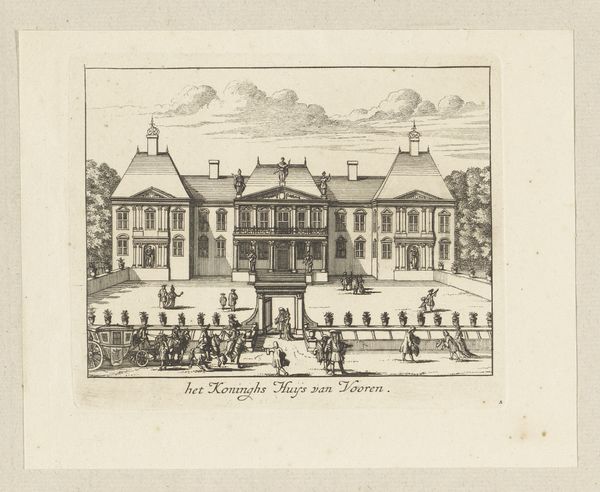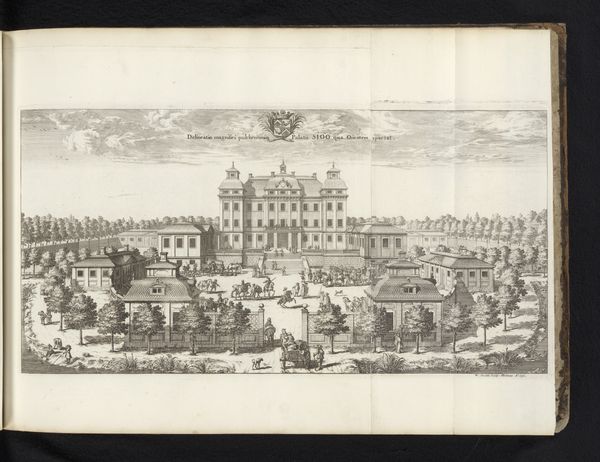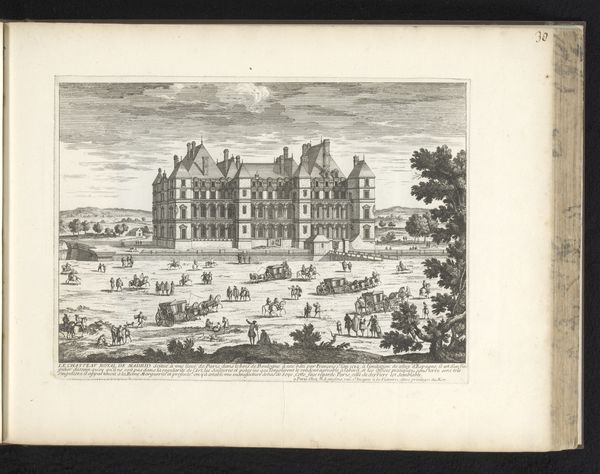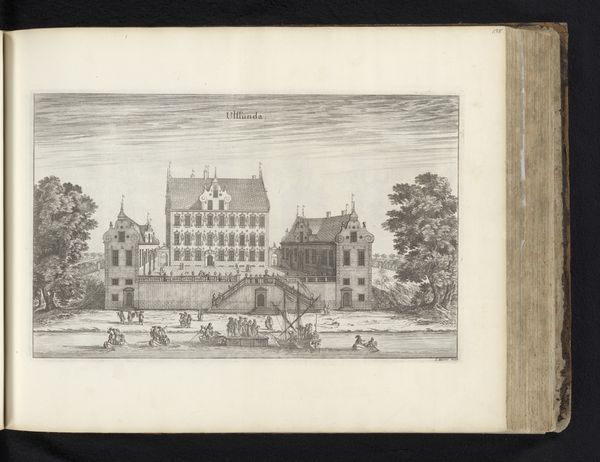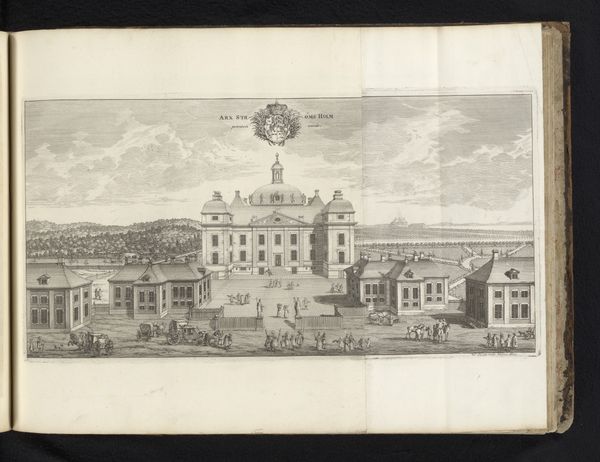
Paleis van Carl Larsson Sparre, vanuit het zuiden en het noorden 1692
0:00
0:00
drawing, print, paper, ink, engraving, architecture
#
drawing
#
baroque
# print
#
old engraving style
#
landscape
#
paper
#
ink
#
pen-ink sketch
#
cityscape
#
engraving
#
architecture
Dimensions: height 284 mm, width 344 mm
Copyright: Rijks Museum: Open Domain
Curator: Let’s turn our attention to this engraving, "Paleis van Carl Larsson Sparre, vanuit het zuiden en het noorden," or "Palace of Carl Larsson Sparre, from the South and the North," created in 1692 by Willem Swidde. It presents two distinct views of a prominent palace. Editor: The detail is astonishing! And almost unnerving in its meticulousness. I mean, it captures this incredible architectural structure with geometric perfection. It gives the impression of rigid societal structures... and power. Curator: Precisely. Swidde's technique – the precise lines of the engraving – certainly echoes the Baroque aesthetic, known for its grandeur and order. Think about the social context: the ruling class was consolidating power. This palace and its representation served as visual manifestations of that power. Editor: So the clean lines, the symmetry…they’re not just aesthetic choices. They’re actively communicating a message. It speaks to the control and almost the performative aspect of power in the late 17th century. The way even the gardens and figures are rendered is almost diagrammatic; a symbol of order that represses individual experience and collective autonomy. Curator: Consider the intended audience for prints like this. They circulated among elites, reinforcing a shared understanding of status and authority. Editor: Which then creates a closed circuit. Images like this shape expectations, reinforcing a particular power dynamic as seemingly natural and inevitable. Who gets represented, and how, tells us everything. Curator: And thinking about access – even viewing it now, through the lens of the Rijksmuseum collection, frames how we understand its cultural value. We are participants in that story. Editor: Exactly. The echoes of that era continue. Analyzing the piece means recognizing the embedded power dynamics not only within the artwork but also in its legacy, prompting necessary conversations about privilege, access, and representation. Curator: Looking at this work from an architectural and social history perspective really demonstrates the complex interactions between art, power, and societal values. Editor: Absolutely, reflecting on how images like this shaped and continue to shape our perceptions, even centuries later, it makes it so necessary for continued critique.
Comments
No comments
Be the first to comment and join the conversation on the ultimate creative platform.

